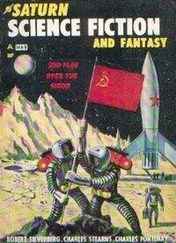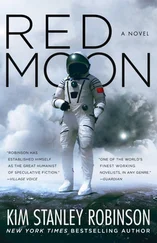At times LeMay’s antics even scared the CIA. “Soviet leaders may have become convinced that the US actually has intentions of military aggression in the near future,” warned an ad hoc committee of CIA, State Department, and military intelligence agency representatives. “Recent events may have somewhat strengthened Soviet conviction in this respect.”
From their American bases in Greenland, Norway, Germany, Turkey, Britain, Italy, Morocco, Pakistan, Korea, Japan, and Alaska, B-47s could reach just about any target in the Soviet Union, furthering LeMay’s well-publicized goal of obliterating 118 of the 134 largest population and industrial centers in the USSR. (LeMay calculated that 77 million casualties could be expected, including 60 million dead.) And he was about to get an even bigger bomber, the intercontinental B-52 Stratofortress, which was just entering into service. The giant plane could carry 70,000 pounds of thermonuclear ordnance over a distance of 8,800 miles at a speed of more than 500 miles an hour. With the B-52, the Americans no longer even needed their staging bases in Europe and Asia to attack Russia. They could do it from the comfort of home without missing more than a meal.
Most distressing for Khrushchev, he had no way of striking back. The biggest Soviet bomber in service, the Tupolev Tu4, was an aging knockoff of the propeller-driven Boeing B-29 with a 2,900-mile range and no midair refueling capacity. It could not effectively reach U.S. soil. The Tu4 would either run out of gas as it approached the American eastern seaboard or crash in the coastal states of New England. In either scenario, planes and pilots would be lost on one-way suicide missions. Unfortunately for the Kremlin, the early prototypes for a pair of bigger bombers, the Mya-4 Bison and Tu95 Bear, which were designed to hit targets deep in U.S. territory, seemed to display similarly suicidal tendencies. Their test flights had been plagued by crashes, and it would be years before they were operational in significant numbers.
The bottom line was that the United States could stage a multipronged attack on the USSR from dozens of points across the globe, while the Soviet Union was hemmed in from all sides and could not retaliate. It was this strategic imbalance, and the urgent need to redress it with an effective retaliatory capability of their own, that drove Khrushchev and the other Presidium members through the windswept countryside on February 27, 1956, to visit the secret missile laboratories of NII-88.
• • •
The tiny czarist town of Podlipki had been erased from Soviet maps. With a swipe of the pen and an eye toward subterfuge, Kremlin cartographers had rechristened it Kaliningrad, the same name they had given to a large Baltic enclave seized from Germany after the war. Such attempts at misdirection were common to conceal sensitive installations, aimed at sending American spies a thousand miles the wrong way, but this one didn’t fool the CIA for long. By the mid-1950s, German V-2 scientists repatriated from Russia had already given the agency a vague idea of what was going on behind the birch forests and high fences that hid NII-88. Allen Dulles knew, for instance, that to get there visitors had to take a series of right turns along a maze of unmarked country roads; that the approach was discreetly monitored; and that about half a mile down the main perimeter wall, a narrow automated steel gate known as the “Mousetrap” governed access to the grounds.
It was through the Mousetrap that Khrushchev’s ZIS-110 slid. In a few months, he would have a new limo—the sleeker, squarer ZIL, modeled after the 1954 Cadillac—and the first party secretary was anxiously awaiting its delivery. In addition to the modern redesign, the ZIL held the promise of being the ultimate Soviet status symbol, because only three people in the entire country would get one: the first secretary of the Central Committee, the chairman of the Supreme Soviet Presidium, and the chairman of the Council of Ministers. Like Khrushchev’s new house on Lenin Hills, with its gardens and fountains, cherry trees, and panoramic views of the Moskva River, the ZIL was a coveted perk that would help the CIA divine the shifting pecking order of communism’s quarrelsome high priests. In the opaque Soviet system, one glance at the Kremlin motor pool could yield more intelligence than a year’s subscription to the newspaper Pravda.
Pravda never made mention of the work in Kaliningrad, for if the name was even spoken “it was always in a whisper,” Sergei Khrushchev recalled. Such was the secrecy surrounding the missile complex that the name of the man who awaited the Presidium delegation this February morning had also been erased from all records. He had been given a pseudonym and was obliquely referred to in official communiqués simply as the Chief Designer. The Chief Designer was a prisoner of his own success. He was deemed so important to national security that a KGB detail watched his every step. For as long as he lived, he would not be permitted to travel abroad. He could not openly wear the numerous medals and citations he received, nor could he have his photograph publicly taken. All this was for his own protection, because the Soviets were convinced that the CIA would try to kidnap or assassinate him. The veil of anonymity would be lifted only after his death, when his name would replace Kaliningrad on post-Communist maps. But back in 1956, Sergei Korolev’s true identity was a closely guarded state secret.
Korolev greeted his guests formally, exchanging rigid handshakes with the Kremlin cardinals. Molotov, the aging diplomat, whose signature had adorned the nonaggression pact with the Nazis, was the senior member of the group. By dint of his decades as foreign minister, he was also the most worldly and urbane. Kaganovich, Khrushchev’s mustachioed former mentor, was another story. Once rakishly handsome, he had grown fat, old, and ugly, and was resentful at heaving been leapfrogged by his protégé. Kirichenko was the new boy, tall and big-boned. He’d been brought in by Khrushchev, who was trying to pack the Presidium with his own acolytes. The last to extend a hand was Bulganin, Khrushchev’s bitter rival, the sly Soviet premier with a sinister silver goatee.
Bulganin and Khrushchev shared power under an uneasy arrangement that satisfied neither man and sowed confusion both at home and abroad. Bulganin, as chairman of the Council of Ministers, headed the government. Khrushchev headed the party. But who was the head of state? According to communist dogma, the government was supposed to answer to the party. But in practice, the subordination was not always so clear-cut. When Eisenhower met both men in Geneva for talks the year before, the president’s advisers had spent much of that summit trying to figure out who was really running the show in the Soviet Union. Such an ambiguous arrangement could not last indefinitely. Nor would it.
While the introductions were made, and aides scurried attentively to take their bosses’ overcoats and homburg hats, the younger Khrushchev soaked in the surroundings. Buildings of all sizes dotted the missile complex: dark, grime-covered brick structures, huge rusty hangars, water towers, military-style barracks, and corrugated steel sheds that stored, among other things, 1,500 tons of potatoes and 500 tons of cabbage so that NII-88’s cantina would not suffer from the food shortages that plagued the rest of the country. There was a decrepit, Dickensian feel to the place, so much so that Sergei Khrushchev mistakenly dated the facility’s original construction to the nineteenth century. In fact, it had been built in 1926 by the German firm of Rhein-Metall Borsig to manufacture precision machinery and was later retooled and expanded to produce artillery pieces for the war. Buildings had a tendency to age prematurely under Soviet care.
Читать дальше












